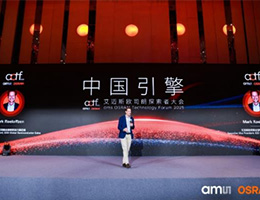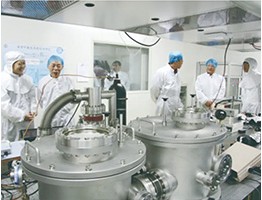The Application and Development of Laser Cleaning Technology in the Wood Products Industry
source:Waterdrop Laser
keywords:
Time:2025-11-04
As global manufacturing places increasingly high demands on environmental protection, efficiency, and precision, laser cleaning—an innovative non-contact, pollution-free, and high-precision surface treatment technology—is sparking a green revolution in the traditional wood products industry.
Studies have revealed that by precisely controlling laser parameters (such as wavelength, power, and pulse width), contaminants like paint, glue, stains, and mold on wood surfaces can be effectively removed without damaging the wood substrate. This makes it particularly suitable for the restoration of delicate wood veneers, complex carved pieces, and historical relics.
Moreover, laser surface treatment can modify the wood’s surface properties: it can alter the surface color, improve surface wettability, enhance the performance of surface coating materials, and boost anti-corrosion and anti-mildew capabilities, among other effects.
Looking ahead, with the integration of intelligent technologies such as beam shaping, adaptive focusing, and real-time monitoring, coupled with the gradual reduction in equipment costs, laser cleaning technology is poised to play an increasingly vital role in fields like high-end furniture manufacturing, ancient building restoration, and wood product remanufacturing. It will emerge as a key driver propelling the industry toward intelligent and green transformation and upgrading.

The Application of Laser Cleaning in the Restoration of Wood Carvings
Laser Cleaning vs. Traditional Cleaning: Core Advantages of Laser Cleaning
Limitations of Traditional Wood Cleaning
The wood products industry covers a wide range of fields, from furniture manufacturing and architectural decoration to craft carving, where the surface cleaning process in production is crucial. Traditional cleaning methods, such as mechanical grinding, chemical solvent cleaning, and high-pressure water washing, generally have many limitations. Most of these methods require consumables (e.g., abrasives, chemical reagents), generate secondary waste, increase disposal costs, and are difficult to automate, with high labor intensity and poor consistency in cleaning quality.
As an emerging surface treatment technology, laser cleaning, with its unique advantages, provides a new technical path to address the aforementioned pain points in the wood products industry. Laser cleaning machines irradiate the wood surface with high-energy pulsed lasers, causing stains, paint, or oxide layers to instantly vaporize or peel off without damaging the substrate.
Core Advantages of Laser Cleaning:
1. Precise control: The spot diameter can be adjusted to 0.1-5mm, suitable for local treatment of wood with complex textures.
2. Environmental friendliness: No chemical solvents are used, reducing VOCs emissions and complying with the EU REACH environmental standards.
3. Efficiency comparison: Experiments show that cleaning old paint from 1㎡ of wood takes only 3-5 minutes, which is 50% more efficient than mechanical grinding.
Mechanisms of Laser Cleaning:
Photothermal effect (Ablation): When contaminants absorb high-energy laser beams, their temperature rises sharply in an extremely short time (nanosecond or even picosecond level), exceeding their vaporization or boiling point, thereby achieving instant evaporation or thermal expansion and peeling off from the substrate surface in the form of shock waves. This mechanism is particularly effective for paint, glue residues, and heavy dirt on wood surfaces.
Photochemical effect: For certain specific contaminants, short-wavelength lasers such as ultraviolet (UV) lasers—with their high single-photon energy—can directly break the chemical bonds of contaminants, decomposing them into volatile small molecules, thus achieving non-thermodynamic "cold" peeling. This method has an extremely small heat-affected zone, making it very suitable for treating heat-sensitive wood surfaces and precious cultural relics.
Key Processes of Laser Cleaning for Wood: Customized Non-Destructive Cleaning
The effectiveness of laser cleaning is not determined by a single factor, but by the synergistic effect of a series of parameters such as wavelength, power, pulse duration, and scanning speed. Selecting an appropriate combination of parameters for wood products is the core technical challenge in achieving efficient and non-destructive cleaning. The choice of laser determines the wavelength.
Nd:YAG laser (1064 nm): This is currently the most widely used type, with good absorption rates for various contaminants such as paint, rust, and oil stains. It has relatively shallow penetration into wood and has been proven suitable for cleaning delicate materials including wood.
CO₂ laser: Wood has an extremely high absorption rate for this wavelength, so it is mainly used for wood cutting and engraving. Extreme caution is required in cleaning applications; otherwise, it can easily cause ablation of the base material.
Ultraviolet (UV) laser: It performs "cold processing" through photochemical effects, with minimal thermal impact. Theoretically, it is very suitable for treating extremely precious and heat-sensitive wooden cultural relics, but the equipment cost is higher.
Power and energy density: Excessively high energy density can cause carbonization, discoloration, or even combustion of the wood surface. Studies have clearly indicated that when using 1064 nm lasers to clean wood products, the energy density should be strictly controlled below 1.5 J/cm² to avoid microscopic damage to the wood.
Pulse duration: The shorter the pulse duration (e.g., nanoseconds (ns), picoseconds (ps)), the more concentrated the laser energy acts on the surface, and the less obvious the effect of heat diffusion into the base material, i.e., the smaller the heat-affected zone. For heat-sensitive wood, using short-pulse or ultra-short-pulse lasers is key to achieving precise non-destructive cleaning.
Scanning speed and repetition rate: These two parameters jointly determine cleaning efficiency and thermal accumulation effects. Excessively slow scanning speed or excessively high repetition rate will cause the laser to act repeatedly on the same spot, easily leading to wood burning. Conversely, it may result in incomplete cleaning.
Main Applications of Laser Cleaning in the Wood Products Industry: Enormous Application Potential
Leveraging its technical advantages, laser cleaning has demonstrated huge application potential in multiple sub-segments of the wood products industry. Application scenarios are as follows:


Laser cleaning technology is standing at the crossroads of transformation in the wood product industry. It is not only a cleaner, more efficient, and more precise surface treatment tool, but also a green manufacturing paradigm that aligns with the future concept of sustainable development. As technology continues to mature and intelligence levels improve, laser cleaning will first achieve breakthroughs in high-value-added fields such as high-end furniture manufacturing, cultural relics and building restoration, and precision woodworking, and gradually penetrate into a wider range of wood product processing fields.
 9th Secret Light Awards Launch: Million-Yuan Fund + National Award Recommendation
9th Secret Light Awards Launch: Million-Yuan Fund + National Award Recommendation Top Enterprises Gather: 1st Laser & Additive Manufacturing Innovation Conference Wraps Up
Top Enterprises Gather: 1st Laser & Additive Manufacturing Innovation Conference Wraps Up 2025 ams OSRAM Explorer Conference: "China Engine" Drives Future Innovation
2025 ams OSRAM Explorer Conference: "China Engine" Drives Future Innovation Tsinghua's Sun Hongbo, SLA Review Expert, Becomes CAS Academician
Tsinghua's Sun Hongbo, SLA Review Expert, Becomes CAS Academician 4th Collaboration! What Brought the Global Laser Academic Guru to Chinese Univs & Leading Firms?
4th Collaboration! What Brought the Global Laser Academic Guru to Chinese Univs & Leading Firms?
 Scanner Optics: Galvanometer Tech Leader
Scanner Optics: Galvanometer Tech Leader The "Light Chasers" in the Deep Ultraviolet World
The "Light Chasers" in the Deep Ultraviolet World Shi Lei (Hipa Tech): Focus on Domestic Substitution, Future Layout in High-End Laser Micromachining
Shi Lei (Hipa Tech): Focus on Domestic Substitution, Future Layout in High-End Laser Micromachining Optizone Technology: 17 Years Devoted to Optics – High-Power Optics Mass-Production Pioneer
Optizone Technology: 17 Years Devoted to Optics – High-Power Optics Mass-Production Pioneer Zhuojie Laser: Breaking barriers via tech breakthroughs, aiming to lead high-end light sources
more>>
Zhuojie Laser: Breaking barriers via tech breakthroughs, aiming to lead high-end light sources
more>>
